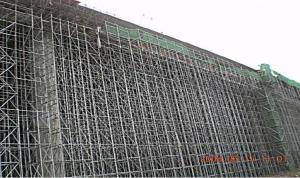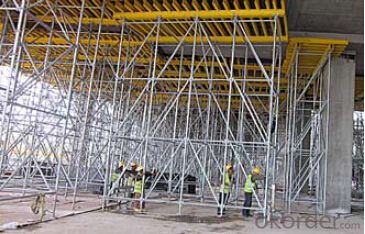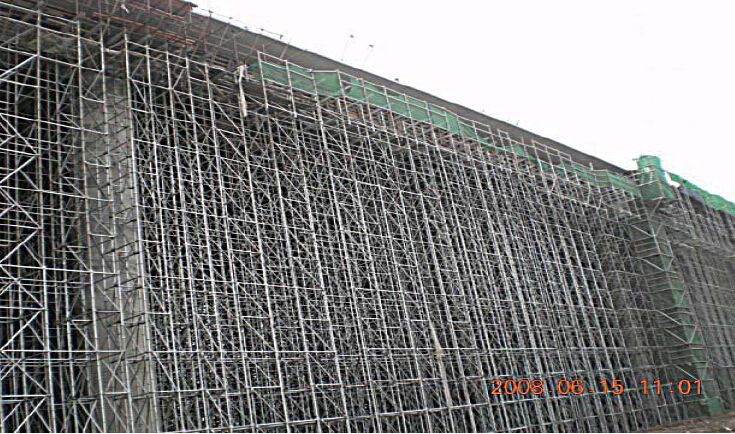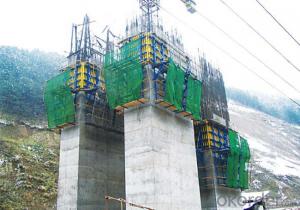Tower-scaffolding for formwork and scaffolding systems
- Loading Port:
- Tianjin
- Payment Terms:
- TT OR LC
- Min Order Qty:
- 50 m²
- Supply Capability:
- 1000 m²/month
OKorder Service Pledge
Quality Product, Order Online Tracking, Timely Delivery
OKorder Financial Service
Credit Rating, Credit Services, Credit Purchasing
You Might Also Like
Tower Scaffolding
Shoring tower is an effective supporting system. It is easy to assemble and dismantlement, and
has excellent stability and bearing capacity. It has been widely used in the construction of industry
& residential buildings , bridges, tunnels and dam project, etc.
Characteristics:
◆ High degree of standardization.
◆ Easy storage and transportation
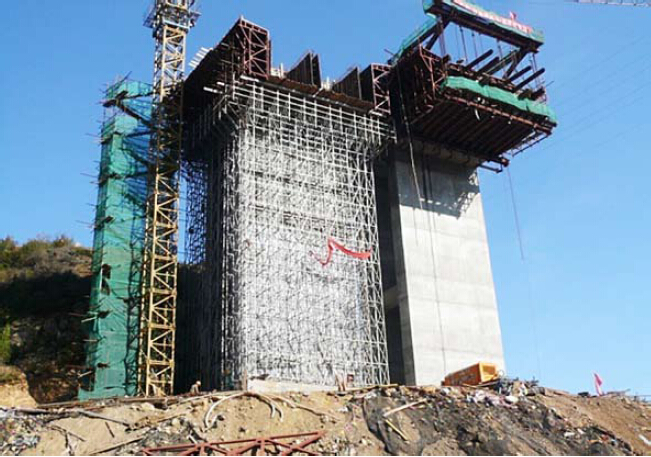
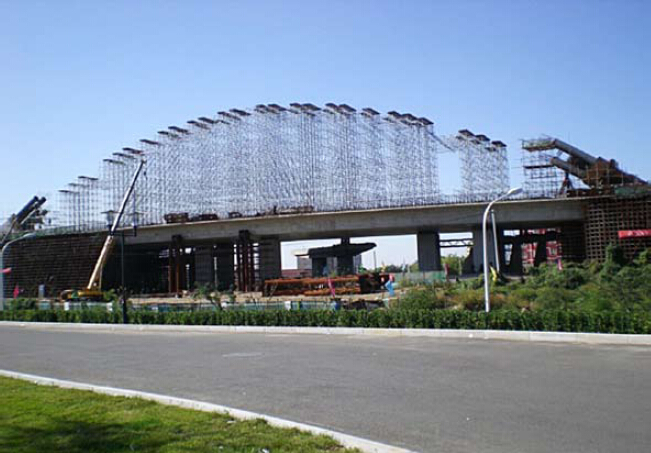
- Q: How does steel formwork handle formwork stripping and cleaning?
- The durability and strength of steel formwork make it highly suitable for formwork stripping and cleaning processes. When it comes to removing the formwork, steel formwork can be easily disassembled and taken off the concrete structure without causing any damage. This is possible because steel is inherently rigid and stable, allowing for efficient and safe stripping. In addition, steel formwork is resistant to moisture, chemicals, and other environmental factors, which makes it easier to clean and maintain. Once the formwork is stripped, any concrete residue or debris can be easily cleaned off the steel surface using appropriate cleaning techniques. This may involve using high-pressure water jets, scrubbing, or other cleaning agents, depending on the specific requirements. Furthermore, steel formwork can be reused multiple times without significant deterioration. After cleaning, the formwork can be inspected for any damages or wear and tear. Any necessary repairs or replacements can be made to ensure the integrity of the formwork for future use. Overall, steel formwork is an efficient choice for handling formwork stripping and cleaning due to its durability, strength, and resistance to environmental factors. Its easy disassembly, cleaning capabilities, and reusability make it a preferred option for construction projects where regular formwork stripping and maintenance is required.
- Q: How does steel formwork contribute to the overall stability of the structure?
- Steel formwork contributes to the overall stability of a structure by providing a strong and rigid framework for concrete placement. It ensures accurate and consistent shaping of the concrete, preventing any deformations or collapses during the construction process. The steel formwork also enhances the structural integrity of the building by evenly distributing the loads and reinforcing the concrete, thereby improving its strength and durability.
- Q: What are the different surface finishes available for steel formwork?
- There are several surface finishes available for steel formwork, including smooth, textured, and coated finishes. Smooth finishes provide a sleek and polished appearance, while textured finishes create a rougher surface for enhanced grip and adhesion. Coated finishes, such as epoxy or galvanized coatings, offer additional protection against corrosion and wear.
- Q: How does steel formwork handle concrete shrinkage and expansion?
- Steel formwork offers a versatile and durable option for managing concrete shrinkage and expansion. One of its key advantages lies in its ability to withstand the forces exerted by concrete during these processes. Concrete shrinkage occurs when water evaporates from the mixture, causing the concrete to contract. Steel formwork is well-suited for handling this shrinkage because it provides a rigid structure capable of resisting the inward force exerted by the contracting concrete. The steel panels and beams used in steel formwork are robust and can maintain their shape under pressure, ensuring the formwork remains intact as the concrete shrinks. On the other hand, concrete expansion can occur due to factors like temperature changes or moisture absorption. Steel formwork is designed to accommodate this expansion by incorporating expansion joints. These joints allow the concrete to expand and contract without damaging the formwork. They can be easily adjusted to accommodate the expansion, ensuring the stability and security of the formwork. Apart from its strength and flexibility, steel formwork offers other benefits in managing concrete shrinkage and expansion. It is highly reusable, allowing for dismantling and reassembly in multiple projects. This reduces construction costs and enables easy adjustments in case of changes due to concrete shrinkage or expansion. Moreover, steel formwork provides a smooth and even surface finish to the concrete, minimizing the risk of cracking or unevenness caused by shrinkage. This guarantees a high-quality final concrete structure that meets desired specifications. In conclusion, steel formwork is a reliable and effective solution for managing concrete shrinkage and expansion. Its strength, flexibility, and ability to accommodate these forces make it the preferred choice for construction projects. By utilizing steel formwork, builders can ensure stable, durable concrete structures free from damage caused by shrinkage or expansion.
- Q: What are the disadvantages of using steel formwork?
- One disadvantage of using steel formwork is its relatively high cost compared to other types of formwork materials. Additionally, steel formwork is heavy and requires special equipment for handling and installation, making it less convenient to transport and set up on construction sites. Moreover, steel formwork needs to be properly maintained to prevent rusting and corrosion, which adds to the overall maintenance cost. Lastly, steel formwork may not be suitable for complex and intricate architectural designs that require flexible formwork systems.
- Q: What are the common connection methods for steel formwork?
- Steel formwork can be connected using several common methods, including welding, bolting, and clamping. Welding is a popular choice due to its ability to create strong and permanent connections by melting two steel components together. However, skilled labor and specialized equipment are necessary for welding. Bolting is another frequently used method, which involves joining steel components using bolts and nuts. This method offers a flexible and adjustable connection, allowing for easy disassembly and reassembly of formwork panels. It is also relatively quick and does not require highly skilled labor. Clamping, on the other hand, utilizes clamps or couplers to connect steel formwork components. This method is often employed for temporary structures or when quick assembly and disassembly are required. Like bolting, clamping provides a flexible and adjustable connection, but it does not require tools or additional hardware. The choice of connection method for steel formwork depends on various factors, such as project requirements, desired level of permanence, ease of assembly, and available resources. Each method has its own advantages and disadvantages, so it is crucial to select the most suitable one based on the specific needs of the project.
- Q: Are there any disadvantages to using steel formwork?
- Yes, there are a few disadvantages to using steel formwork. Firstly, steel formwork is generally more expensive to purchase and maintain compared to other types of formwork materials. Additionally, steel formwork is heavier and more difficult to handle and transport, which can increase labor costs and project timelines. Furthermore, steel formwork requires skilled labor for assembly and dismantling, adding to the overall project costs. Lastly, steel formwork may not be suitable for all types of construction projects, especially those involving complex or irregular shapes.
- Q: What is the 86 series steel formwork
- The utility model is used for pouring concrete, and the length is 300, 450, 600, 900, 1200, 1500, width of 200, and 300.
- Q: How does steel formwork handle different concrete surface finishing options?
- Steel formwork is a versatile and durable option for creating concrete structures, and it is capable of handling different concrete surface finishing options with ease. The smooth and rigid surface of steel formwork allows for various finishing techniques to be applied to the concrete, resulting in different textures and appearances. One common concrete surface finishing option is a smooth finish, which is achieved by using steel formwork that is well-maintained and properly aligned. The smooth surface of the steel formwork transfers onto the concrete, resulting in a sleek and polished finish that is often desired for architectural and decorative purposes. Another option is a textured finish, which can be achieved by using steel formwork with patterns or textures imprinted onto it. The concrete takes on the texture of the steel formwork, creating a visually appealing and unique surface. Steel formwork also allows for the application of various coatings and treatments to the concrete surface. For example, a steel formwork can be coated with a release agent prior to pouring the concrete, which helps in achieving a smooth finish and easy removal of the formwork. Additionally, the steel formwork can be treated with a curing compound or sealant to enhance the durability and appearance of the concrete surface. Overall, steel formwork provides a reliable and adaptable solution for handling different concrete surface finishing options. Its strength and rigidity allow for the creation of smooth, textured, and coated finishes, giving flexibility to architects and contractors in achieving the desired aesthetic and functional requirements of the concrete structure.
- Q: Is steel formwork suitable for projects with high concrete temperature requirements?
- Yes, steel formwork is suitable for projects with high concrete temperature requirements. Steel has excellent heat resistance properties, making it ideal for withstanding high temperatures during the curing process of concrete. Additionally, steel formwork is durable, strong, and can be reused multiple times, making it a cost-effective choice for such projects.
Send your message to us
Tower-scaffolding for formwork and scaffolding systems
- Loading Port:
- Tianjin
- Payment Terms:
- TT OR LC
- Min Order Qty:
- 50 m²
- Supply Capability:
- 1000 m²/month
OKorder Service Pledge
Quality Product, Order Online Tracking, Timely Delivery
OKorder Financial Service
Credit Rating, Credit Services, Credit Purchasing
Similar products
Hot products
Hot Searches
Related keywords

